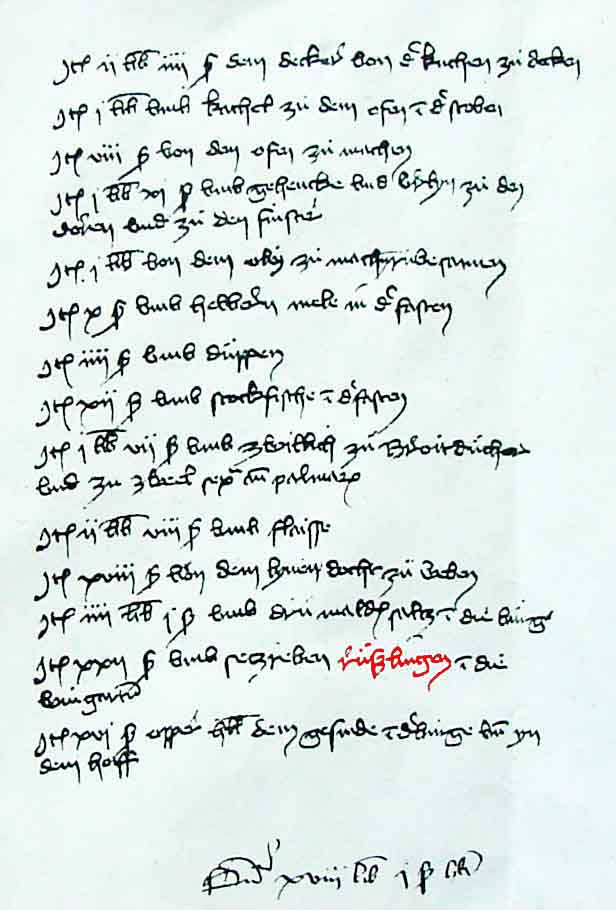

In the year 1435 the Rüsselsheim castle administrator Klaus Kleinfisch began a new wineyard. His annual account shows the purchase of riesling Setzreben for 22 shilling. This kind of wine had a higher quality than the other french wines, was more aromatic but also frost-resistant. His new choice was - wineyards can exist more than onehundred years - the turningpoint in winehistory. Up to this point the old documents only reported red, white or black wine according to their colour. Even in the year 1402 the electoral prince of mainz ordered to grow no other wines than his french wines. After the rüsselsheim vintage Riesling quickly showed up all the way down the river rhine. Up to the year 1600 riesling became top wine. In the castle of Darmstadt count Johann IV united the two most powerful counties of the "holy roman empire of the german nation" in one of the most beautiful medieval marriages of his son Philipp d. Ältere of Katzenelnbogen with countess Anna of Württemberg. Even his son-in-law landgrave Heinrich III of Hessen was enthusiastic about this amount of gold , silver and wine. In 1427 the 10 most important katzenelnbogen castles were consuming about 200 000 liters of wine a year and in 1436 storing 1.5 million l wine in mainz . The counts were remarkably rich supporting arts and could afford rewarding medieval singers like Walther von der Vogelweide with a diamond. They created the most powerful castle, the first undefeatable german "bollwerk" Auerbach, defended themselves on the largest german castle with the largest german wine-cellar the Rheinfels castle. They loved the power but were sophisticated. Thanks to their correct book-keeping we can read about their live, family affaires and trading. One vase of china and one tankard is all they left. But the writings tell us and still want to be searched. They gave us the riesling wine, one symbol of pride worth to be honoured.
The successors may have formed a modern top wine out of the riesling plant, but the documented first grower of the most important german and one of the most important international wines was Johann IV, the Count of Katzenelnbogen. Contact official website of Katzenelnbogen
Additional the county customs writer noticed the first bratwurst export to cologne in 1410, the records listed bratwurst for 1gulden on a boat loaded with wine. This is the first proof of the traditional german bratwurst. The size is defined by pork casings. The transport itself tells us katzenelnbogen bratwurst must have been widely known.
|
.

Account 13th of march 1435 of Klaus Kleinfisch for his Count Johann IV of Katzenelnbogen